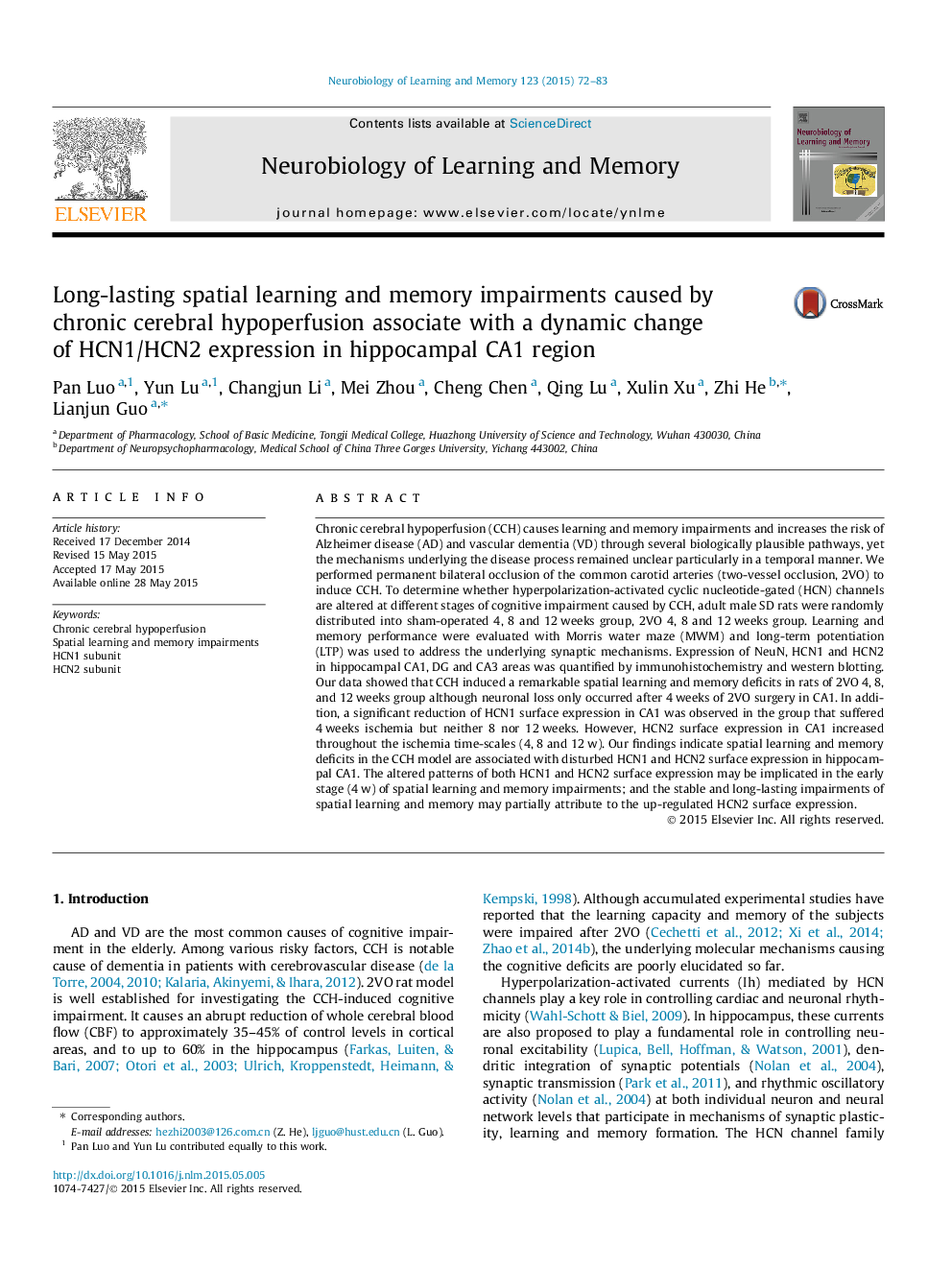| Article ID | Journal | Published Year | Pages | File Type |
|---|---|---|---|---|
| 936449 | Neurobiology of Learning and Memory | 2015 | 12 Pages |
•Consistent spatial learning and memory deficits were observed after 2VO.•The imbalance of HCN1/HCN2 was involved in the cognitive alterations caused by 2VO.•HCN1 disorder only involved the early stage of cognitive deficits caused by 2VO.•HCN2 disorder contributed to the long-lasting cognitive deficits caused by 2VO.
Chronic cerebral hypoperfusion (CCH) causes learning and memory impairments and increases the risk of Alzheimer disease (AD) and vascular dementia (VD) through several biologically plausible pathways, yet the mechanisms underlying the disease process remained unclear particularly in a temporal manner. We performed permanent bilateral occlusion of the common carotid arteries (two-vessel occlusion, 2VO) to induce CCH. To determine whether hyperpolarization-activated cyclic nucleotide-gated (HCN) channels are altered at different stages of cognitive impairment caused by CCH, adult male SD rats were randomly distributed into sham-operated 4, 8 and 12 weeks group, 2VO 4, 8 and 12 weeks group. Learning and memory performance were evaluated with Morris water maze (MWM) and long-term potentiation (LTP) was used to address the underlying synaptic mechanisms. Expression of NeuN, HCN1 and HCN2 in hippocampal CA1, DG and CA3 areas was quantified by immunohistochemistry and western blotting. Our data showed that CCH induced a remarkable spatial learning and memory deficits in rats of 2VO 4, 8, and 12 weeks group although neuronal loss only occurred after 4 weeks of 2VO surgery in CA1. In addition, a significant reduction of HCN1 surface expression in CA1 was observed in the group that suffered 4 weeks ischemia but neither 8 nor 12 weeks. However, HCN2 surface expression in CA1 increased throughout the ischemia time-scales (4, 8 and 12 w). Our findings indicate spatial learning and memory deficits in the CCH model are associated with disturbed HCN1 and HCN2 surface expression in hippocampal CA1. The altered patterns of both HCN1 and HCN2 surface expression may be implicated in the early stage (4 w) of spatial learning and memory impairments; and the stable and long-lasting impairments of spatial learning and memory may partially attribute to the up-regulated HCN2 surface expression.
